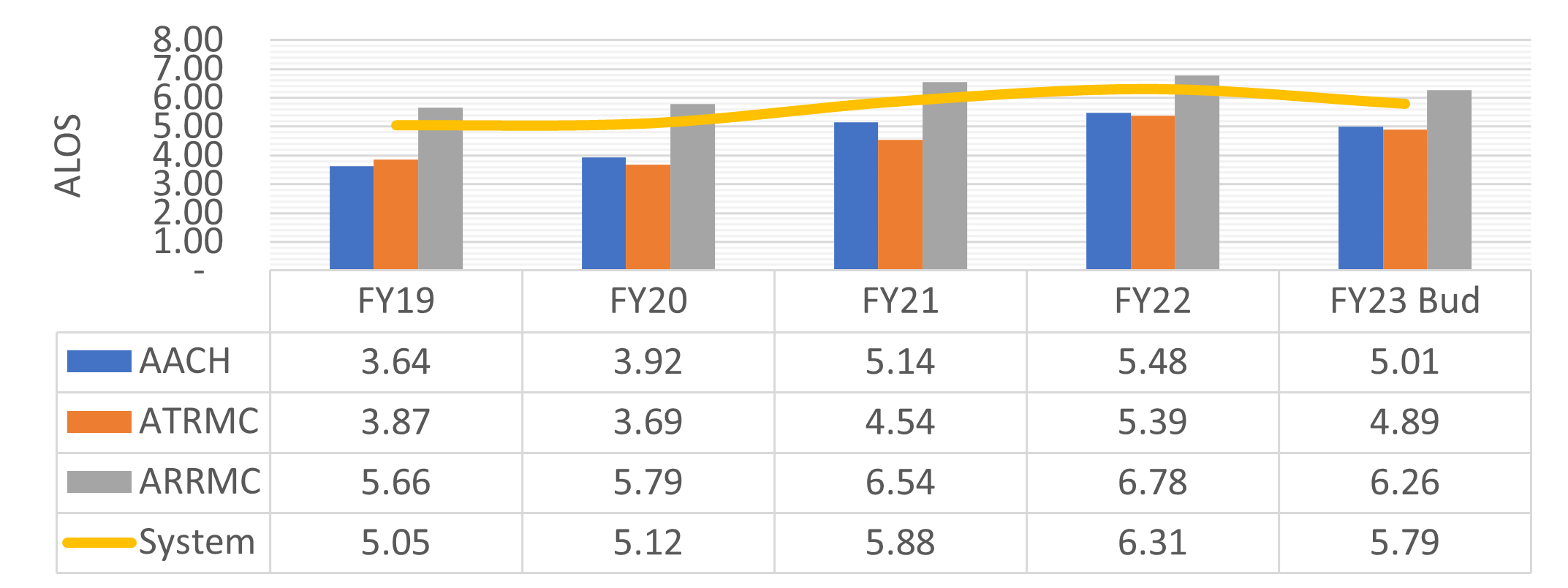Share:
Shorter hospital stays are good for our patients and our system
One of the best hospital safety measures is to ensure patients don’t stay longer than they need. Research has found that the more days a patient remains in a hospital setting, the greater their risk of infection, deconditioning and other complications than can affect outcomes. And the longer a hospital’s average length of stay, or ALOS, the less capacity it has to treat more acute patients, not to mention the increased care costs associated with a high ALOS.
The average length of stay in hospitals is often used as an indicator of efficiency, according to the Organization for Economic Cooperation and Development, or OEDC, an international economic coalition.
“All other things being equal, a shorter stay will reduce the cost per-discharge and shift care from inpatient to less expensive post-acute settings,” OECD states. “The ALOS … is generally measured by dividing the total number of days stayed by all inpatients during a year by the number of admissions or discharges.”
Asante has seen its ALOS increase substantially over the past five years as shown in the graph below. This trend was worsened by the COVID-19 pandemic, which delayed discharges as long-term care and skilled nursing facilities struggled to keep up with the influx of patients.

To reverse this trend, we’re aiming to reduce our ALOS by 0.5 days this fiscal year (2023).
How will we do this?
- A key goal is to increase capacity and improve throughput, which in turn shortens ALOS. As mentioned earlier, we are all aware of the patients who are unable to be discharged due to a lack of capacity in sub-acute care settings. We also have opportunity to improve efficiency to our patients who are discharging to home. A half-day reduction of ALOS will result in a financial improvement of $11.6 million.
- A systematic, data-driven and multipronged approach to implement care pathways that reduce length of stay and improve discharge efficiency will be led by Dr. James Grebosky, chief medical officer, and myself.
- We have engaged Edgility, a capacity-management and throughput consultant, to meet Asante’s immediate needs of improving efficiency while setting up the infrastructure for the larger vision of the Asante command center.
- To make effective discharge plans, we will optimize the estimated date of discharge (EDD) that the whole care team can work toward. Predicting a discharge date early in each patient’s stay plays an important role in efficient patient throughput.
- We will also implement discharge milestones, in conjunction with discharge delays and EDD, to serve as a communication tool for the interdisciplinary care team and TAC on the patient’s readiness to leave the hospital. This improves discharge efficiency and reduces patient waits after a discharge order has been written.
How can you help?
- Understand why ALOS is critical for our system and support our efforts as shown in the table below.
- Help reduce barriers to discharge.
- Engage in Edgility as soon as opportunities arise.
| Providers | Nursing | Resource Management |
| Enter EDD at admission. | Review and update EDD after initial entry. | Identify barriers and communicate. |
| Complete discharge orders by 10 a.m. | Complete timely discharge milestone. | Assist with complex discharge placement. |
| Ensure timely discharge. |
Shortening our average length of stay requires a commitment from each of us. If we follow the measures we’re putting in place, we can provide better outcomes for our patients, increase our capacity and help lower health care costs. Thank you for doing your part.
If you have a question, please contact the author or relevant department directly.



